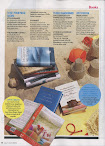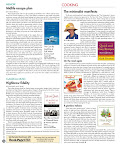From the BBC
Beaches along the south coast of England will remain closed indefinitely to prevent looters taking away more than 2,000 tonnes of washed-up timber.
The wood, several feet deep on the tide line, is from the Greek-registered Ice Prince which sank about 26 miles (42km) off Dorset after a storm last Tuesday.
Beaches along the Sussex coast from Ferring as far east as Hastings have been littered with the timber.
Dover Coastguard said it was likely more would wash up on Kent's beaches.
West Sussex County Council (WSCC) said its beaches, which were the worst affected, would be out of bounds to the public for the foreseeable future.
The salvage operation is being carried out by contractors authorised by the Maritime and Coastguard Agency (MCA).
WSCC said there were unconfirmed reports of minor damage to sea defences.
It said people taking the wood had become a "serious problem".
A spokesman said: "Lots of people have been turning up, including men in vans taking a load - a significant number of people."
Sussex Police has issued a warning to say removing the timber is unlawful, and if people continue to take the wood, they could be liable to prosecution and arrest under the Merchant Shipping Act.
Safety warnings
The Marine Conservation Society warned on Monday that 313 tonnes of fuel oil remained on the vessel and required urgent removal.
However, it said the fuel tanks appeared at present to be still intact.
"The Ice Prince lies adjacent to a commercial fishery for flatfish species such as plaice and sole, and seabirds such as razorbill and guillemot," said a spokesman.
Worthing beach was closed at the weekend to allow heavy machinery to remove the washed-up cargo.
Wendy Knight, from Worthing Borough Council, said the ship's owners had appointed contractors to find a market for the timber which would then be sold.
Barriers and cordons were being erected along the beach, with "public safety the key element".
Mariners, windsurfers and canoeists have been warned that the floating wood could cause a serious accident.
The 10m (33ft) lengths of sawn wood were put on board in bundles, but sea conditions broke many of them apart.










